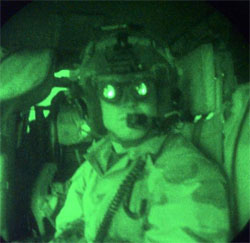
Night time flying
Moderator: drseti
-
jeepinbanditrider
- Posts: 21
- Joined: Thu Mar 17, 2011 8:49 pm
- Location: T67
- Contact:
Re: Night time flying
Just my opinion.....yes it is. Most if not all people cannot see nearly as well at night, depth perception is greatly degraded and the small diameter navigation lights on small aircraft cause them to appear further away than they actually are.NCPilot wrote:What is the thinking behind the no night time flying? I mean VFR night time flying is no more dangerous than day time VFR. Is there any hint that the FAA will amend the rules to allow Sports Pilot to get night time endorsement?
Theo
.[/quote]
Shouldn't put down spots be planned out ahead of time? I may be over-preparing but whenever I plan out a route, i'd like to take a moment and look at all the possible place I could put down my aircraft if I have to.[/quote]
If anyone can actually tell what is really on the ground or the topography of any specific area by looking at a NAV map, please tell me how you do it.
There is some information to be learned from doing a map reconnaissance ahead of time with a topograhical map or using an airborne maping program, but with the rate of urban sprawl it would take a very current map to maintain any level of accuracy. And the level of resolution on the airborne pictomaps available to the most of us is only about 4 meters at best and is not capable of showing tree branches out of follage or above ground wires.
But even if good emergency landing spots could be planned out using these resources there is still the issue of being able to locate the planes exact location over the ground down to about 100 meters, at night in the dark followed by the ability to see and avoid all ground obstacles during the final approach to emergency landing.
Shouldn't put down spots be planned out ahead of time? I may be over-preparing but whenever I plan out a route, i'd like to take a moment and look at all the possible place I could put down my aircraft if I have to.[/quote]
If anyone can actually tell what is really on the ground or the topography of any specific area by looking at a NAV map, please tell me how you do it.
There is some information to be learned from doing a map reconnaissance ahead of time with a topograhical map or using an airborne maping program, but with the rate of urban sprawl it would take a very current map to maintain any level of accuracy. And the level of resolution on the airborne pictomaps available to the most of us is only about 4 meters at best and is not capable of showing tree branches out of follage or above ground wires.
But even if good emergency landing spots could be planned out using these resources there is still the issue of being able to locate the planes exact location over the ground down to about 100 meters, at night in the dark followed by the ability to see and avoid all ground obstacles during the final approach to emergency landing.